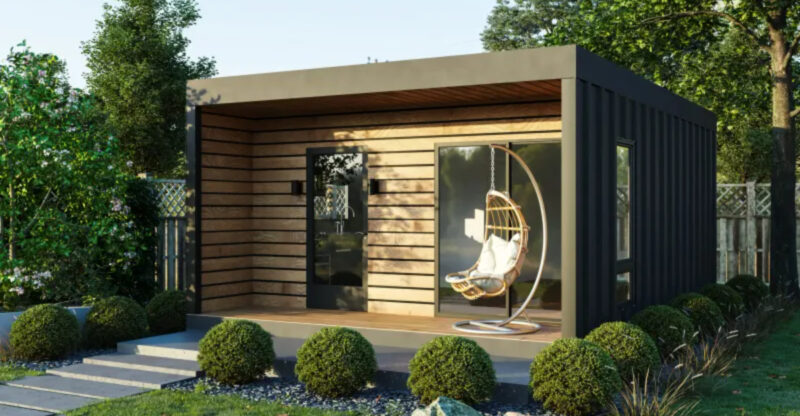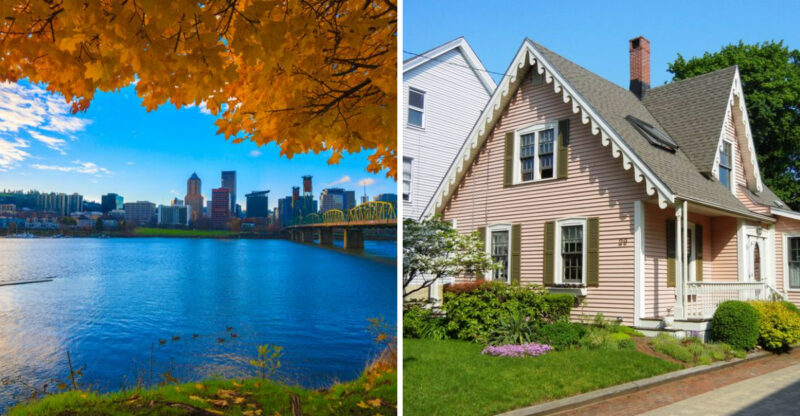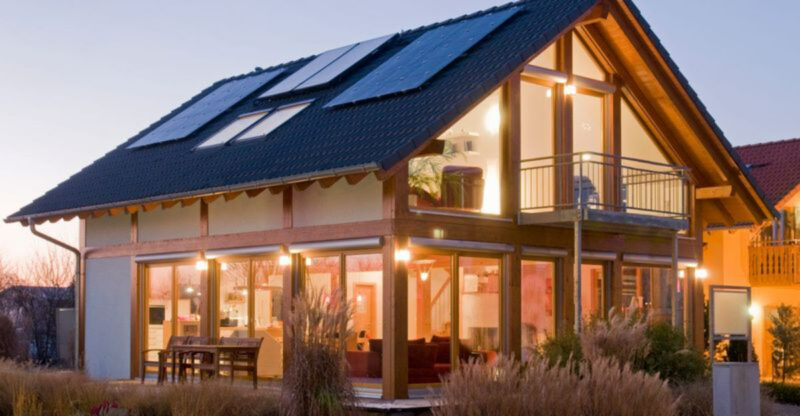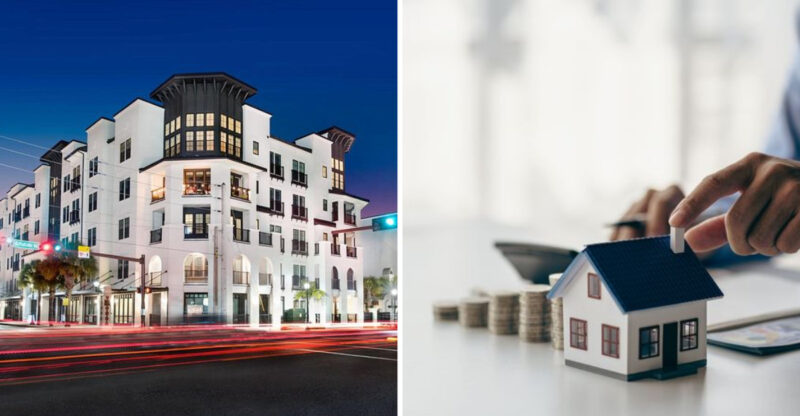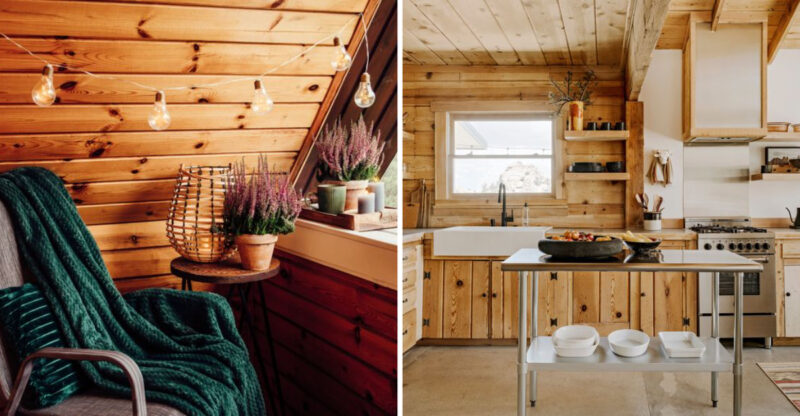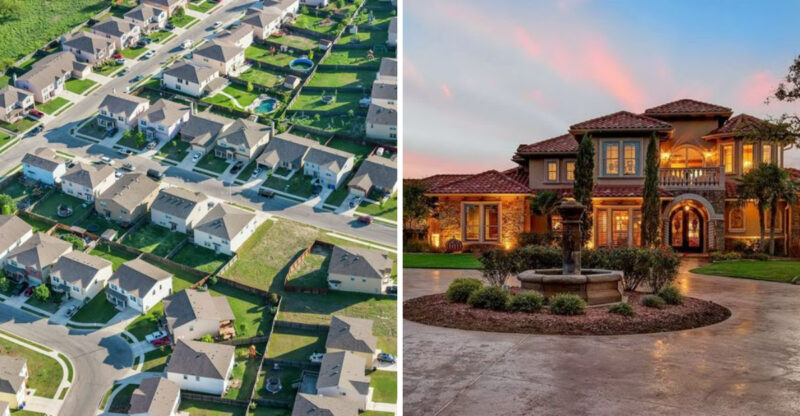11 California Home Designs Expected To Dip In Value (And 9 That Might Boom)
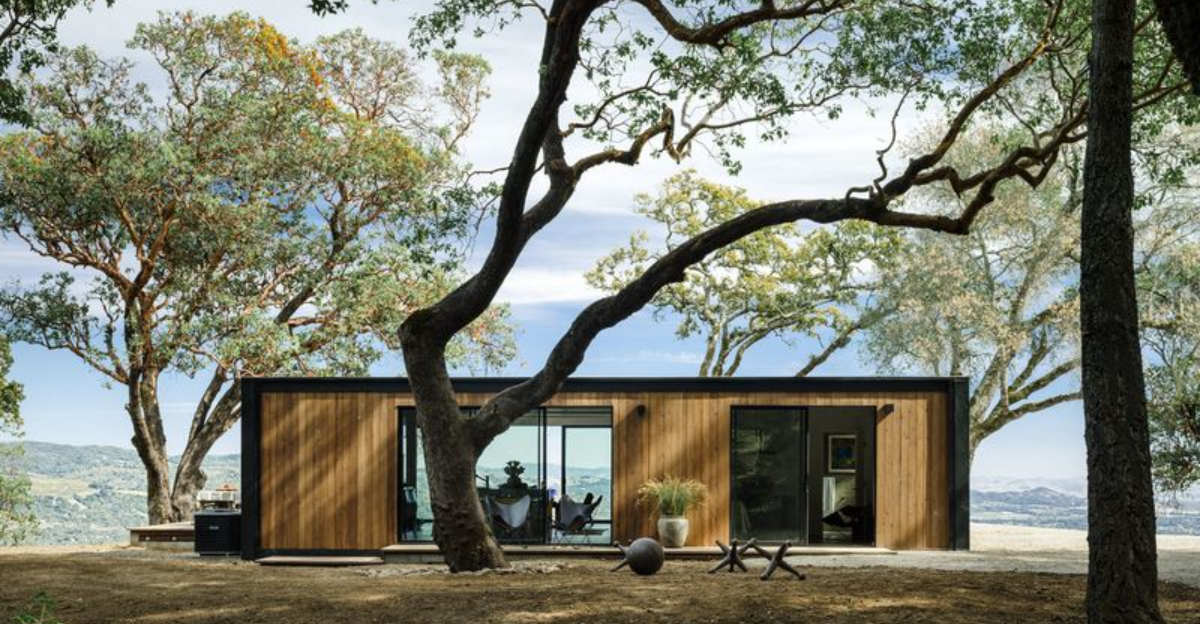
California’s housing market is always shifting, and certain home styles rise or fall with changing tastes and buyer preferences. Some designs that once felt fresh and exciting are losing their appeal, while others are gaining momentum as people seek more sustainable and timeless spaces. Understanding which styles might lose value and which could boom helps homeowners and buyers make smarter decisions about their investments.
1. Tuscan Villas
Once the height of luxury living, Tuscan-inspired homes are seeing less interest from today’s buyers. These properties often feature heavy archways, ornate iron details, and warm earthy tones that feel dated rather than classic.
Younger buyers tend to prefer cleaner lines and simpler aesthetics. Maintenance costs for all those decorative elements can add up quickly, making these homes less practical for modern lifestyles.
2. Mediterranean Revival
Mediterranean Revival homes brought Old World charm to California neighborhoods, but their elaborate styling is falling out of favor. Intricate tilework, wrought iron balconies, and grand entryways require constant upkeep that many buyers find overwhelming.
The formal layouts don’t match how families live today. Buyers increasingly want flexible spaces that adapt to their needs, not rigid room arrangements frozen in another era.
3. Spanish Colonial Overhauls
Spanish Colonial homes have beautiful bones, but overly dramatic renovations can backfire. When homeowners pile on too many rustic beams, elaborate tile patterns, and heavy wooden doors, the result feels more like a theme park than a home.
Authenticity matters, and overdone versions miss the mark. Buyers can spot the difference between genuine historic character and forced decorative excess that tries too hard.
4. Heavy Rustic Log Homes
Log homes might work in mountain retreats, but they feel out of place in most California markets. The dark interiors and cabin aesthetic don’t align with the bright, airy vibe that California living represents.
These homes also come with unique maintenance challenges. Wood requires regular treatment to prevent decay and insect damage, adding ongoing costs that many buyers would rather avoid in their primary residence.
5. Faux Modern Farmhouse
Farmhouse style exploded in popularity, but the trend has been overdone to the point of exhaustion. Homes covered in shiplap walls, sliding barn doors on every room, and farmhouse sinks in every bathroom feel generic rather than charming.
The style has become so trendy that it’s already dating itself. What felt fresh five years ago now looks like it’s trying too hard to capture a moment that’s already passed.
6. Excessive Open-Concept Layouts
Open floor plans became the standard, but removing every wall creates problems. Noise travels freely, cooking smells drift everywhere, and families struggle to find private spaces for work or quiet time.
The pandemic taught many people that dedicated rooms serve important purposes. Buyers now want some separation between spaces, not one giant room that tries to do everything at once without succeeding at anything.
7. Ultra-Minimalist Concrete Homes
Concrete minimalism looks striking in architecture magazines but feels cold and unwelcoming in real life. These homes prioritize aesthetic purity over comfort, leaving residents in spaces that echo and feel more like galleries than homes.
Families need warmth and softness, not hard surfaces everywhere. The extreme minimalist approach might appeal to a tiny niche, but most buyers want homes that actually feel livable and cozy.
8. Over-The-Top Smart Homes
Smart home technology offers convenience, but homes with overly complex systems can intimidate buyers. When every light, shade, and appliance requires an app or complicated programming, the technology becomes a burden rather than a benefit.
Systems also become outdated quickly, leaving buyers with expensive upgrades ahead. Simple, intuitive smart features add value, but excessive automation that nobody asked for usually doesn’t pay off.
9. Eclectic Boho Interiors
Boho style celebrates personality and global influences, but taken too far, it becomes visual chaos. Rooms packed with mismatched patterns, hanging plants, and layers of textiles feel overwhelming rather than relaxed.
Buyers want to envision their own style in a space. When a home screams one particular aesthetic this loudly, it’s harder for potential buyers to see past the current owner’s personal taste.
10. Single-Use McMansion Builds
McMansions prioritize size over substance, with huge footprints but awkward layouts. Formal dining rooms that never get used, massive foyers that waste space, and bedrooms so large they’re hard to furnish don’t match how people actually live.
Energy costs for heating and cooling these giants are astronomical. Younger buyers especially prefer smaller, well-designed homes over sprawling properties that feel empty and expensive to maintain.
11. Overly Themed Coastal Decor
Coastal homes should feel breezy and relaxed, but some take the theme way too literally. Anchor motifs on every wall, seashell collections covering surfaces, and navy-striped everything turns a home into a caricature of beach living.
Subtle coastal influences work beautifully, but heavy-handed theming feels touristy. Real coastal style comes from natural materials, light colors, and ocean views, not from decorating every surface with maritime symbols.
12. Sustainable Modern Ranch
Ranch-style homes are getting a sustainable makeover that buyers love. These updated versions combine classic single-story layouts with solar power, water-saving fixtures, and energy-efficient windows that slash utility bills.
The horizontal lines and connection to outdoor spaces feel distinctly Californian. Adding modern sustainability features brings these homes into the future while maintaining the comfortable, accessible layout that made ranches popular in the first place.
13. Mid-Century Modern Revivals
Mid-century design never really went away in California, and authentic revivals are gaining even more value. Clean lines, floor-to-ceiling windows, and indoor-outdoor flow capture what makes California living special.
Buyers appreciate homes that honor original architecture while updating systems and efficiency. Well-executed restorations that preserve character details while improving function are increasingly sought after, especially in established neighborhoods with mid-century heritage.
14. Japandi Minimalism
Blending Japanese simplicity with Scandinavian coziness, Japandi style is winning over California buyers. Natural materials, neutral palettes, and carefully chosen furnishings create calm spaces that feel both warm and uncluttered.
This approach values quality over quantity, with each piece serving a purpose. The aesthetic matches California’s growing interest in mindful living, where less stuff and more intention leads to better daily experiences at home.
15. Desert Contemporary
Desert Contemporary style embraces California’s arid landscapes with low-water gardens, earth-toned exteriors, and designs that work with the climate rather than against it. Large overhangs provide shade, while strategic windows capture views without overheating interiors.
This style feels fresh and responsible, addressing water scarcity and heat challenges elegantly. Buyers in desert regions increasingly seek homes that celebrate their environment instead of pretending they’re somewhere else.
16. California Craftsman Restorations
Craftsman bungalows represent California’s architectural heritage, and thoughtful restorations are highly valued. Original woodwork, built-in cabinetry, and front porches offer character that new construction can’t replicate.
These homes fit beautifully in walkable neighborhoods that buyers increasingly prefer. Restorations that update plumbing, electrical, and efficiency while preserving historic charm strike the perfect balance between old and new, making them smart long-term investments.
17. Indoor-Outdoor Flow Homes
California’s climate makes indoor-outdoor living not just desirable but essential. Homes with disappearing glass walls, covered outdoor rooms, and seamless transitions between inside and outside spaces are commanding premium prices.
These designs extend living space without adding square footage, making homes feel larger and more versatile. The ability to open up completely to gardens and patios captures the essence of California lifestyle that buyers are willing to pay extra for.
18. Coastal Organic Modern
Coastal Organic Modern takes beach house style in a sophisticated direction. Natural textures like linen, jute, and light woods create relaxed elegance without the clichéd nautical symbols.
This approach feels current and timeless simultaneously, avoiding trends that quickly date. Soft neutral palettes, organic shapes, and materials that age beautifully appeal to buyers seeking coastal living with refined, grown-up style that won’t feel tired in five years.
19. Modular Prefab Designs
Prefab homes have shed their dated reputation, with modern modular designs offering quality construction at lower costs. Factory-built sections arrive on-site for quick assembly, reducing construction time and waste.
These homes often incorporate sustainable materials and efficient systems from the start. As California housing costs remain high, well-designed prefab options provide an attractive entry point without sacrificing style or quality, making them increasingly popular.
20. Passive Solar Architecture
Passive solar design uses the sun’s energy naturally, positioning windows and thermal mass to heat and cool homes without mechanical systems. Overhangs shade summer sun while allowing winter warmth, reducing energy use dramatically.
California’s climate is perfect for these strategies, and buyers increasingly value homes that work with nature. Lower utility bills and reduced environmental impact make passive solar architecture both financially smart and ethically appealing for conscious homeowners.

